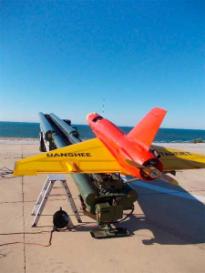ICARO

CCD-based spectroradiometers constitute an innovative, promising and versatile technology for a thorough measurement of the solar radiation's spectral structure. While the widely used broadband radiometers provide only wavelength-integrated radiation, CCD spectroradiometers allow to have spectrally resolved measurements. Moreover, CCD spectroradiometers are also particularly useful to analyze the effect on different wavelengths under cloudy conditions, when the radiation field varies rapidly, and a complete spectrum registered by a scanning spectroradiometer does not suitably discriminate these fast variations.
Other vanguard technologies such as remotely piloted aircrafts (RPAs) also offer new and interesting possibilities for many applications such as monitoring the Earth. In particular it could be used for monitoring the atmosphere at different levels and, therefore, obtaining profiles of several meteorological variables under different sky conditions. Moreover, the National Institute for Aerospace Technology (INTA) has a wide experience in aeronautic activities. Indeed, INTA is the national center responsible for aerospace certification, and El Arenosillo site is the common location for essaying flights with RPAs in Spain.
In this framework, ICARO project combines the afore mentioned technologies with ground-based instrumentation in order to achieve a comprehensive description of the radiation field. Our project benefits from the small size of CCD spectroradiometers and proposes to install this instrumentation at two ground stations (at Badajoz and El Arenosillo) and also in an RPA, jointly with other meteorological and radiometric sensors, cameras, etc.
Based on all these facilities, our project is mainly aimed at monitoring the solar radiation at ground and at different levels in low and middle troposphere (up to 5000 m). The ground and profile measurements will be obtained by using ground-based instrumentation at the two reference stations and RPAs, respectively. The cloud and aerosol forcing at cases of study corresponding to well-defined sky scenarios will be analyzed. The forcing will be estimated using the values simulated by a radiative transfer model for cloud and aerosol free conditions as baseline.
